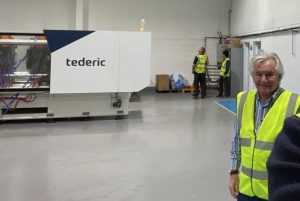New lighting system will save Liverpool Royal £44,000 a year

LIGHTING firm Morgan Hope has signed a contract with Liverpool Royal Hospital to install eco-friendly lighting which will save it £44,000 each year.
The Southport-based firm will install cutting-edge lighting in the hospital which will help it cut energy costs by up to 90%.
These use a movement detection system which switch the lights to a ‘hibernation’ state when no one is there.
Morgan Hope has recently completed the first phase of work installing almost 700 bespoke lights throughout the building.
The company has calculated that the new lighting will save the Royal Liverpool University Hospital – which already uses a green energy system with turbines generating power – £44,000 every year.
The original lighting in the building was the traditional switch start fluorescent lighting.
John Murray, sales director at Morgan Hope, said: “Traditional switch start fluorescent lighting is what we typically find in older buildings, but it is very wasteful in terms of energy.
“The existing lights in the hospital use more than 100 watts of power per light fitting.
“In addition to this many of the lights are in the corridors and wards and have to be left on 24/7 for health and safety reasons, increasing the cost of lighting for the building.”
The old lights are being replaced with ‘high frequency T5 lamps’ which are brighter than the existing lighting and more economical, with each light fitting only needing 56 watts of power.
With the new system, when the light detects movement in the area it gives 100% output but once the space is empty for longer than five minutes the lights dim to 50% output, then to a hibernation state of only 10% output after a further 2.5 minutes.
Andy Johnson, sustainability and energy manager at Royal Liverpool University Hospital, said: “The ward lighting project reflects the Trust’s continuing commitment to reducing its energy consumption and carbon footprint.
“The system was fitted with minimum disruption, which meant our wards could remain open during the installation work.
“The new system has helped to improve the patient environment and feedback from staff has been positive, particularly night staff, who have found the dimmable system a real benefit in ensuring patients are not disturbed by bright lights during the night.”
The hospital also estimates that it will dramatically reduce the building’s carbon footprint, saving more than 190 tonnes of carbon year on year.







